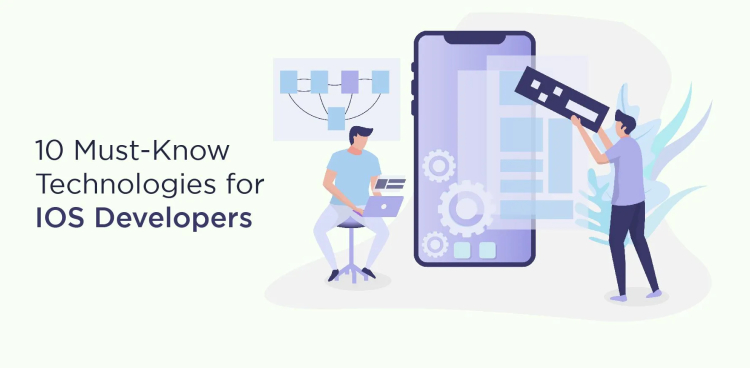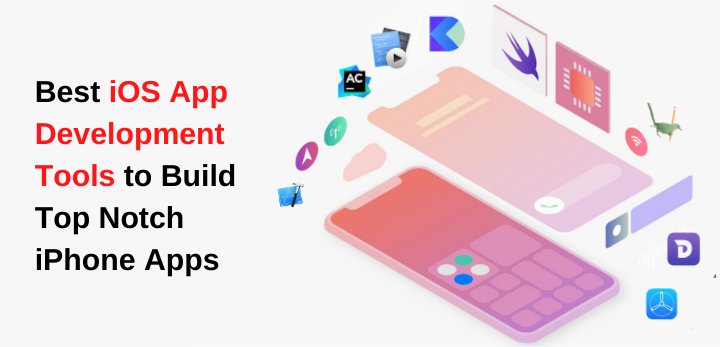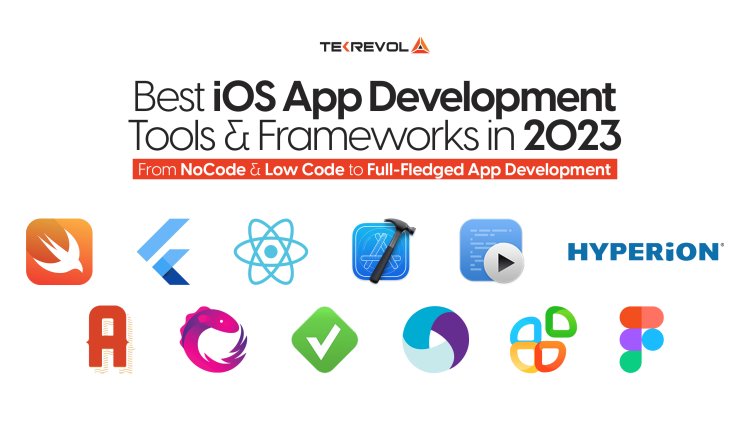The Complete Guide to Mobile App Development
Mobile app development is a dynamic and rapidly evolving field that plays a crucial role in the digital ecosystem. This extensive guide explores every facet of mobile app development, from foundational concepts to advanced techniques and emerging trends.
Introduction to Mobile App Development
Mobile applications, or mobile apps, are software programs designed to run on mobile devices such as smartphones and tablets. They leverage the unique capabilities of mobile hardware and operating systems to provide users with functionalities ranging from productivity tools and entertainment to e-commerce and social networking platforms.
Evolution of Mobile Platforms

The history of mobile app development traces back to the early days of mobile phones, where basic applications like calculators and calendars were pre-installed on devices. The advent of smartphones in the late 2000s, particularly with the launch of the iPhone and Android devices, marked a transformative era for mobile technology.
Early Mobile Platforms
-
iOS: Apple's iOS platform revolutionized mobile computing with its intuitive touch-based interface and robust App Store ecosystem. Initially launched in 2007, iOS introduced developers to a new era of mobile app development using Objective-C and later Swift programming languages.
-
Android: Developed by Google and launched in 2008, Android quickly gained popularity for its open-source nature, customization options, and support for a wide range of devices. Android developers utilize Java, Kotlin, and Android SDK to build native applications for the platform.
Modern Mobile Platforms
-
iOS: Over the years, iOS has evolved with significant updates focusing on security enhancements, performance optimizations, and the introduction of new features like ARKit for augmented reality applications. The adoption of Swift as the primary programming language has streamlined development processes for iOS apps.
-
Android: Android continues to dominate the global mobile market, offering developers a flexible platform to create diverse applications. The introduction of Android Studio IDE and Kotlin programming language has further accelerated Android app development, emphasizing code efficiency and developer productivity.
Key Technologies in Mobile App Development
Mobile app development encompasses a wide array of technologies and frameworks tailored to address various aspects of app creation, including user interface design, data management, performance optimization, and integration with backend services.
Front-End Development
Front-end development focuses on creating engaging user interfaces (UI) and seamless user experiences (UX) that are responsive and visually appealing across different devices and screen sizes.
-
UI/UX Design: Designers use tools such as Adobe XD, Sketch, or Figma to create wireframes and mockups that define the layout, navigation flow, and visual elements of the app.
-
Native vs. Cross-Platform Development: Developers can choose between native app development (using platform-specific languages and tools) and cross-platform frameworks like React Native, Flutter, or Xamarin, which allow for code reuse across multiple platforms.
-

Back-End Development
Back-end development involves server-side logic, database management, and integration with external services to support the app's functionality and data processing requirements.
-
Server-Side Languages: Developers use languages such as Node.js, Python (Django), Ruby (Rails), and Java (Spring Boot) to build scalable and robust backend systems. These languages facilitate data storage, business logic implementation, and API integrations crucial for app operation.
-
Cloud Services: Cloud platforms like AWS (Amazon Web Services), Google Cloud Platform (GCP), and Microsoft Azure provide scalable infrastructure and services for hosting backend components, managing databases, and supporting serverless computing models.
Mobile App APIs and Integration
Mobile apps often rely on APIs (Application Programming Interfaces) to communicate with external services, fetch data in real-time, and enable key functionalities such as authentication, payment processing, and social media integration.
-
RESTful APIs: REST (Representational State Transfer) APIs are widely adopted for client-server communication in mobile apps, leveraging HTTP(S) protocols to exchange data in JSON or XML formats.
-
OAuth and Authentication: Implementing OAuth protocols ensures secure user authentication and authorization processes, allowing users to sign in to apps using existing credentials from platforms like Google, Facebook, or Apple.
Mobile App Development Lifecycle
The mobile app development lifecycle encompasses several stages that guide the progression from initial concept to app deployment, maintenance, and iterative improvements based on user feedback and market trends.
1. Ideation and Planning
-
Market Research: Conducting thorough market research helps identify target audiences, analyze competitor apps, and understand user needs and preferences. This information informs the app's concept, features, and value proposition.
-
Feature Specification: Defining the app's core functionality, user stories, and feature priorities establishes a roadmap for development, ensuring alignment with business objectives and user expectations.
2. Design and Prototyping
-
Wireframing and Mockups: Designers create wireframes and visual mockups using specialized tools to visualize the app's interface, navigation flow, and interactive elements. Iterative design reviews and user feedback refine the app's design before development begins.
-
Interactive Prototyping: Prototyping tools such as InVision, Marvel, or Adobe XD allow stakeholders to interact with clickable prototypes, simulating user interactions and validating design concepts early in the development process.
3. Development

-
Front-End Development: Front-end developers translate design mockups into interactive interfaces using platform-specific SDKs, programming languages, and UI frameworks. They focus on optimizing performance, responsiveness, and accessibility across different devices and operating systems.
-
Back-End Development: Back-end developers build server-side logic, APIs, and database structures that power the app's functionality. They implement data storage solutions, business logic processes, and integration points with third-party services to support app operations.
4. Testing and Quality Assurance
-
Testing Types: QA engineers conduct rigorous testing, including unit testing, integration testing, functional testing, usability testing, and performance testing, to identify bugs, validate app behavior, and ensure compliance with quality standards.
-
Beta Testing: Deploying beta versions of the app to a selected group of users (beta testers) helps gather real-world feedback, identify usability issues, and prioritize bug fixes before the app's full release.
5. Deployment and Launch
-
App Store Submission: Developers prepare the app for submission to app stores like Apple App Store and Google Play Store, adhering to platform guidelines, preparing app assets (screenshots, descriptions), and undergoing app review processes.
-
Launch Strategy: Marketing and promotion efforts, including app store optimization (ASO), social media campaigns, and targeted advertising, aim to maximize app visibility, attract initial users, and drive downloads upon launch.
6. Post-Launch Maintenance and Updates
-
App Monitoring: Monitoring app performance metrics, user analytics, crash reports, and feedback channels helps developers identify issues promptly and prioritize ongoing improvements.
-
Iterative Improvements: Releasing regular updates, adding new features, addressing user feedback, and optimizing app performance based on analytics ensure sustained app relevance, user satisfaction, and long-term success.
Roles in Mobile App Development
Effective collaboration among diverse roles is essential for successful mobile app development, combining technical expertise, creative design, project management, and quality assurance throughout the development lifecycle.
-
Product Owner: Defines the app's vision, features, and development priorities based on market research, user feedback, and business goals. The product owner collaborates closely with stakeholders to ensure alignment with strategic objectives and user needs.
-
Project Manager: Oversees project timelines, resource allocation, and team coordination to facilitate efficient development processes, monitor progress, and mitigate risks throughout the app lifecycle.
-
UI/UX Designer: Designs intuitive and visually appealing interfaces, user flows, and interactive elements that enhance usability, accessibility, and overall user experience in mobile apps.
-
Mobile App Developer: Front-end, back-end, or full-stack developers write code, implement features, and optimize app performance using platform-specific languages, SDKs, and development frameworks tailored to iOS, Android, or cross-platform environments.
-
Quality Assurance (QA) Tester: Conducts comprehensive testing to identify bugs, validate app functionalities, and ensure adherence to quality standards through systematic test plans, test cases, and regression testing.
-
DevOps Engineer: Manages app deployment pipelines, infrastructure automation, and continuous integration/continuous deployment (CI/CD) processes to streamline development workflows, ensure scalability, and maintain operational efficiency in mobile app environments.
Emerging Trends in Mobile App Development
Mobile app development continues to evolve with advancements in technology, changing consumer behaviors, and emerging market trends that shape the future of digital experiences and mobile-first strategies.
1. Artificial Intelligence (AI) and Machine Learning (ML)
- AI-Powered Apps: Integrating AI/ML algorithms enhances mobile apps with intelligent features such as predictive analytics, personalized recommendations, natural language processing (NLP), and computer vision capabilities.
2. Internet of Things (IoT)
- Connected Devices: Developing apps that connect with IoT devices (smart home appliances, wearable devices) enables users to control devices remotely, collect sensor data, and automate tasks via mobile interfaces.
3. Augmented Reality (AR) and Virtual Reality (VR)
- Immersive Experiences: AR/VR technologies create immersive environments and interactive content for gaming, education, retail, real estate, virtual meetings, and industrial applications, transforming user interactions and engagement.
4. 5G Technology

- Enhanced Connectivity: Leveraging 5G networks delivers faster data speeds, lower latency, and improved network reliability, enabling real-time streaming, high-definition content delivery, and bandwidth-intensive applications.
Conclusion
Mobile app development remains at the forefront of digital innovation, enabling businesses and developers to create impactful solutions that cater to diverse user needs, enhance productivity, and drive engagement across global markets.
By understanding the fundamental concepts, key technologies, development methodologies, and collaborative roles involved in mobile app development, stakeholders can navigate the complexities of app creation.


























